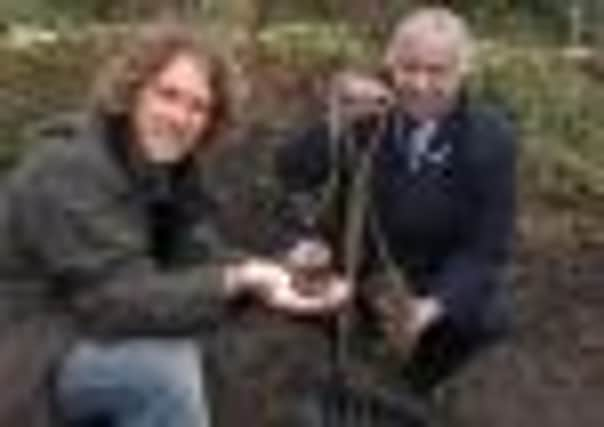Hunting for truffle growers


It was a French gastronome called Jean Anthelme Brillat-Savarin, who described the truffle as `the diamond of the kitchen’. It’s probably thought of today as a French and Italian delicacy, but at one time it was very much part of our cuisine.
“England used to have a thriving industry, with markets in Wiltshire where people made their living from it.” says expert Dr Paul Thomas.
Advertisement
Hide AdAdvertisement
Hide Ad“Queen Victoria used to be presented with the biggest truffle of the season. We used to be on a par with France, but due to de-forestation, and a lack of re-generation and the right soil type it all died out.”
Dr Thomas is looking for farmers to grow truffles. His Hebden Bridge company, Mycorrhizal Systems Ltd, specialises the ways truffles can be grown deliberately.
Usually it’s all been about truffle hunters taking pot-luck in the wild. It all comes down to the nature of the truffle, what it is, and how it grows.
Mycorrhiza describes the mutually beneficial relationship between fungi and plants. in this case between fungus and tree roots.
Advertisement
Hide AdAdvertisement
Hide Ad“The best way to think of a truffle is as an underground mushroom,” says Dr Thomas. “But it’s solid, it doesn’t have any gills and it’s the fruit of the truffle fungus which covers the root system of a tree like a glove covering a hand. It helps the tree to grow and the tree helps the fungus to grow.”
In essence the truffle is a seed-pod containing spores, explains Dr Thomas. “We start from seeds, clean and grow them and at the same time we’re culturing up the truffle fungus.”
At the right moment they are introduced to each other by inoculation. Once it’s been checked that the fungus is growing on the root of the tree – usually oak or hazel – they’re ready to be sent out and planted.
Mark Tatam, who farms near the Humber, planted two and a half acres of his arable farm with these truffle trees.
Advertisement
Hide AdAdvertisement
Hide Ad“It’s a gamble as it’s a new thing and it takes time,” says Mark. “You’re talking seven to ten years. But two and a half acres is a very small piece of land.”
Dr Paul Thomas says much of Yorkshire has the right type of land. The perfect soil is alkaline. More acidic soils can be remedied by him.
Climate plays a part too – our rainfall and relatively mild temperatures are ideal.
The deal is for farmers to provide the land with Dr Thomas supplying the trees at a discount along with the expertise.
Advertisement
Hide AdAdvertisement
Hide Ad“Once they’re planted we do all the consultancy for free,” says Dr Thomas. “So we come, we monitor the trees, check for growth and diseases and monitor the growth of the truffle.
“When the plantation starts producing we also sell the truffles for them in return for a share in the truffles.”
The season is from June to Christmas, and the truffles themselves get more valuable as the season goes on and they mature.
In June they fetch about a £100 a kilogram. It’s double that by September and Christmas truffles can fetch more than £500 a kilo.
Advertisement
Hide AdAdvertisement
Hide AdThe truffles are hunted by trained dogs. Pigs are no longer used. Extracting a truffle from a hungry pig can be quite challenging for the fingers.
Mark Tatam is realistic about the fact that this may not produce his fortune. He he says truffles will be an added bonus if they appear en masse in seven or eight years time.
“It’s very good to have the wood, because older trees die, but otherwise it was just a very nice idea. If it does work out I could do quite well.
“I liked the idea that at the time we’re harvesting, it I would be retirement age. And it would be very nice to have a dog that you’ve got trained to hunt for truffles.”